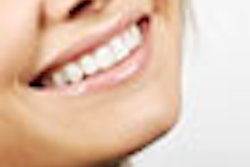
Editor's note: Helaine Smith's column, The Mouth Physician, appears regularly on the DrBicuspid.com advice and opinion page, Second Opinion.
The majority of the cosmetic dentistry that I perform on my patients is rehabilitative with the added benefit of looking great. I choose the most aesthetic materials such as Empress and zirconia and use a highly trained ceramist.
My practice is in Boston and very rarely do I have young patients with almost perfect teeth requesting veneers. In New York or California, this may happen frequently in a cosmetic practice, but not in mine. I see fractured, worn, discolored teeth with large anterior leaky composites.
Teeth like this should be restored to proper form and be given the ability to function again without the fear of breaking more. This can be accomplished with a beautiful Empress veneer that strengthens the remaining tooth structure and restores the shape of the tooth -- what some people would call "cosmetics."
The ethics bandwagon
Dentists love to hop on the ethics bandwagon and talk about over treatment and drilling on virgin teeth, but very often some preparation is needed. Yes, very thin veneers can be used, but only when they accomplish the aesthetic goal of the patient.
Blocking out darkly stained teeth requires a thicker veneer. In these cases, the tooth must be prepped; otherwise the restoration is too bulky or the tooth is still dark. I have four veneers that required no prep and they look great. So I know this can be accomplished, and I will do that when it is appropriate.
In the posterior region, my first choice is to do bonded onlays and inlays rather than crowns when it is indicated. Onlays are a great service to provide to a patient who fractures the mesial lingual cusp of the first molar and has the remaining tooth structure intact. In today's world, I feel doing a crown in this situation is a disservice to the patient. A bonded onlay will restore the tooth and preserve the healthy tooth structure.
People are living longer and will have their restorations changed several times over their life. Bonded porcelain restorations are the best choice in many cases because they preserve healthy tooth structure. The same dentists who say veneers are overtreatment often do full crown coverage in cases like this. So who is removing healthy tooth structure?
Know your occlusion!
Many misconceptions exist among dentists regarding cosmetics and the skill it takes to do a cosmetic case properly. Occlusion needs to be managed and understood, otherwise the restoration has a high probability of failing. Not because the Empress is not strong, but because the occlusal forces were too strong and not managed.
It is easier to blame the lab or material than to look at your own errors. I strongly recommend that dentists take a series of occlusion courses. I am very impressed with the curriculum at the Las Vegas Institute for Advanced Dental Studies in occlusion; I feel it is the best available.
Occlusal disease often goes undiagnosed. Dentists do not know what they do not know. Patients have gingival clefts, ab fractions, and fractured cusps often due to traumatic occlusal forces. Recognizing this during an exam and knowing how to easily treat occlusal disease can prevent tooth loss and further destruction of the entire masticatory system by losing vertical dimension.
Cosmetic dentistry is comprehensive care and requires the dentist's skills to be at the level of a mouth physician.
The comments and observations expressed herein do not necessarily reflect the opinions of DrBicuspid.com, nor should they be construed as an endorsement or admonishment of any particular idea, vendor, or organization.
Copyright © 2008 DrBicuspid.com



















